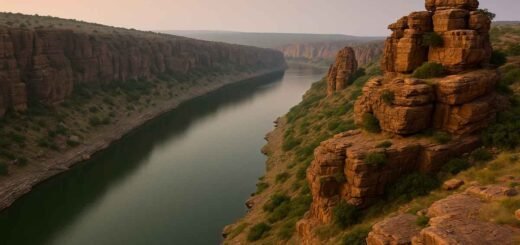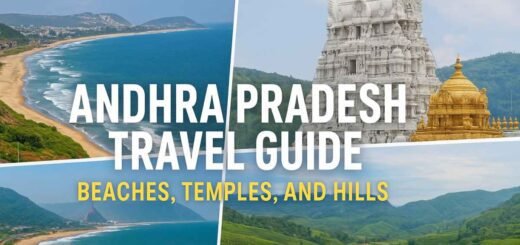Mystical Eastern Himalayas Travel
Mystical Eastern Himalayas travel unveils hidden sanctuaries and soul-stirring views. Explore remote trails, cultures & nature in this ultimate guide—start the journey now.
Mystical Eastern Himalayas travel invites you into a realm of misty valleys, rare cultures, and landscapes untouched by time. While many flock to Himachal or Uttarakhand, the eastern stretches—Arunachal Pradesh, eastern Sikkim, northern Assam, and the Bhutan border zones—remain less explored. In this guide, I’ll take you through 7 unforgettable places you must see, how to get there, what to do, and tips to travel safely in this magical region.
Contents
Quick Facts at a Glance
| Attribute | Details |
|---|---|
| Region | Eastern Himalayas (Arunachal, Eastern Sikkim, Assam, Bhutan border) |
| Best months to visit | April to June, September to October |
| Highlights | Alpine meadows, tribal villages, high-altitude lakes, birdlife |
| Nearest airports | Guwahati (Assam), Bagdogra (WB), Tezpur (Assam) |
| Permits required | Inner Line Permits (ILP), Protected Area Permits in Arunachal, Bhutan transit permits |
| Language(s) | Assamese, Nepali, local tribal dialects, Hindi, English |
How to Reach
By Air
- Guwahati (Lokpriya Gopinath Bordoloi International) is the main gateway for Assam and parts of Arunachal.
- Bagdogra (West Bengal) is convenient when entering Sikkim side.
- For Bhutan border areas, Paro Airport is the international port for Bhutan.
By Rail
- Major Indian railhead: New Jalpaiguri (for Sikkim side), Guwahati for Assam.
- From there, travel by road.
By Road & Permits
- From Guwahati → drive to Tawang (Arunachal) via Tezpur & Bomdila.
- From Siliguri → reach Gangtok, then onward to eastern Sikkim border zones.
- Visitors to Arunachal require Protected Area Permits / Inner Line Permits (ILP).
- For Bhutan border zones (e.g. in eastern Sikkim), get transit permit via Bhutan Tourism Authority in advance.
Best Time to Visit
- Spring (April – June): Rhododendrons bloom, weather stays pleasant.
- Autumn (September – October): Clear skies, colorful forests, ideal for photography.
- Avoid monsoon (July – August): Landslides risk, roads unstable.
- Winter (Nov – Feb): Heavy snow in high zones; many roads close, though low valleys remain accessible.
Best Things to Do
- Trek through Mechuka Valley (Arunachal) — riverside trails, yak meadows, tribal villages.
- Visit Zuluk / Thambi Viewpoint (eastern Sikkim) — iconic zigzag roads and sunrise views of Kanchenjunga.
- Explore Tawang Monastery & Sela Pass — high-altitude monasteries and cold lakes.
- Birdwatch in Namdapha National Park — rare species, dense forests.
- Drive the Himalayan Border Road between India–Bhutan — remote passes, untouched landscapes.
- Homestay in Monpa / Sherdukpen villages — experience indigenous tribal life.
- Camp at Pangchen Valley or high meadows in North Kameng district.
Local Cuisine & Food to Try
- Thukpa / Momos (Tibetan influence) in Tawang / Sikkim zones
- Zan / Pika / Apong — fermented beverages in Arunachal tribal cuisine
- Churpee (yak cheese), Butter tea
- Local river fish specialties (in Assam border areas)
- Millet breads, bamboo shoot preparations, tribal stews
Where to Stay
- Homestays in tribal villages (Mechuka, Bomdila, Ziro) — best cultural immersion
- Guesthouses in Tawang, Dirang, Bomdila
- Eco-lodges in Sikkim’s border zones
- Camps / tents in high meadows (advance booking, guide required)
Shopping & Souvenirs
- Handwoven tribal shawls, bamboo crafts (Arunachal)
- Thangka paintings, prayer wheels (monastery towns)
- Traditional silver jewellery of Monpa or Sherdukpen tribes
- Local herbal teas, medicinal herbs
- Yak wool products in high passes
Seasonal Travel Insights
- Spring: high-altitude passes may still have snow; roads may open late.
- Autumn: ideal for photography—crisp air, minimal haze.
- Monsoon: many routes blocked; river swells.
- Winter: access limited; enjoy low-altitude valleys or plan snow treks only with experienced guides.
Nearby Attractions
- Ziro Valley (Arunachal): pine forests, Apatani tribe, rice fields
- Namchi (Sikkim): Temi tea gardens, monasteries
- Bomdila (Arunachal): Butterfly sanctuary, monasteries
- Pelling (Sikkim): views of Kanchenjunga, waterfall treks
- Dirang hot springs
Travel Tips
- Always carry permits, ID proofs, multiple copies.
- Local guides are invaluable in remote zones — hire from nearby towns.
- Try to travel in convoys in remote roads for safety.
- Pack layers — weather changes quickly.
- Be respectful of tribal customs; ask before photography.
- Internet signals may fail — carry offline maps, physical copies.
- Travel insurance is recommended for altitude zones.
FAQs
- What is the ideal duration for Mystical Eastern Himalayas travel?
A 10-day to 2-week trip allows you to cover one major corridor (e.g. Guwahati → Tawang) or combine Sikkim & Arunachal. - Do foreigners need special permits in Eastern Himalayas?
Yes — Inner Line Permit (ILP) and Protected Area Permits are required in Arunachal; transit permit needed for Bhutan-border zones. - Is high altitude an issue?
Yes. Some passes are above 13,000 ft. Acclimatize gradually, avoid exertion on first days. - What’s the best time to see Rhododendrons bloom?
Late April to mid May is peak—especially in Arunachal’s higher elevation zones. - Can I combine Bhutan and Eastern India in one trip?
Yes, provided you have Bhutan permits and plan the route accordingly via India’s border zones. - Is road connectivity reliable?
It’s improving but vulnerable to landslides, especially in monsoon. Always check local updates.
Mystical Eastern Himalayas travel is about stepping into lands where the clouds linger, cultures thrive in harmony with nature, and every turn rewards you with silence and awe. Plan well, respect local ethos, and embrace the unknown. Let mystical eastern Himalayas travel be your next unforgettable journey — start exploring today.
Useful Links
- Offbeat Andhra Pradesh Travel Guide
- Arunachal Pradesh Tourism Official Portal
- Bhutan Tourism Authority
Author Block
Author: Prayanamam


